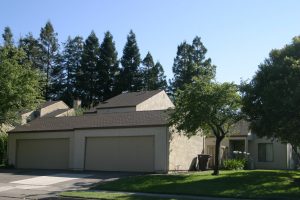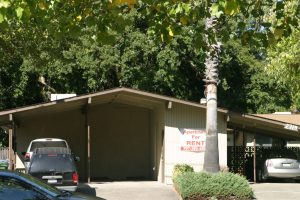Investment Property Analysis: Gross Rent Multiplier, CAP Rate, Cash on Cash Return
 While all property should be an investment, let’s look at property bought to give us a return. This is property we buy and hold and usually produces income through rent. This will be a short primer on how to look at investment property. This is a general example only and any property will have more factors to look at but this will give you the basics in how to begin an analysis of investment property.
While all property should be an investment, let’s look at property bought to give us a return. This is property we buy and hold and usually produces income through rent. This will be a short primer on how to look at investment property. This is a general example only and any property will have more factors to look at but this will give you the basics in how to begin an analysis of investment property.
The first thing often asked or said about investment property is it is a “Cash Flow” opportunity. But what does that really mean? How can you compare one investment to another in any meaningful way? There are several levels of depth in looking at investment property and the more deeply you go into it the better you will understand the intrinsic value.
Gross Rent Multiplier
Vacancy
Cap Rate
Cash on Cash Return
GROSS RENT MULTIPLIER
Let’s start with income. Investment properties should produce income which usually comes in the form of rent. To make things simple and to compare properties we will make all the figures annual. The total annual expected rent is the Gross Income. This is also called Gross Scheduled Income because it assumes the investment is always rented. Many investors look at the Gross Rent in relation to the price to get a ratio called the Gross Rent Multiplier (GRM). If you divide the value or price of a property by the Gross Rent you get the GRM. Let’s create an example of a $100,000 single family house whose rent is $1,000 a month or $12,000 a year
GRM= Price / Scheduled Gross Rent.
8.33= $100,000/ $12,000
You can now compare this to other properties that are on the market or have sold and the lower the GRM the better is the relationship between Price and Rent for the investor. In other words when the multiplier is lower you get more rent for each dollar of value. This should mean a higher rate of return in income. However, this is really a “rule of thumb” way of looking at property because it does not take into account the full reality of an investment. For example, you may not get the full scheduled rent because of vacancies. In a stable neighborhood properties may stay rented longer with less turnover than in a neighborhood with challenges. Expenses can be much higher when there are more turnovers (changes in tenants). It also does not take into account the expenses of owning. I recommend a much deeper analysis.
VACANCY
 Of course, all properties will experience some vacancy. Tenants move out and it may take time to find new ones. Most markets have an average vacancy rate. So we should assume that we will overtime experience at least that rate. The Gross Income minus the Vacancy Rate will give you the Effective Rent. Let’s continue with our imaginary house with a price of $100,000 and $1,000 a month/ $12,000 a year rent. If the vacancy rate is 5% then we would deduct 5% of $12,000 or $600 from the Gross Rent to get the Effective Rent of $11,400.
Of course, all properties will experience some vacancy. Tenants move out and it may take time to find new ones. Most markets have an average vacancy rate. So we should assume that we will overtime experience at least that rate. The Gross Income minus the Vacancy Rate will give you the Effective Rent. Let’s continue with our imaginary house with a price of $100,000 and $1,000 a month/ $12,000 a year rent. If the vacancy rate is 5% then we would deduct 5% of $12,000 or $600 from the Gross Rent to get the Effective Rent of $11,400.
Now we need to look at expenses. There are maintenance, utilities, taxes, insurance, advertising, and management costs. Many investors mistakenly ignore major expense like a new roof in their calcuations because they happen infrequently or they are buying a newly built property and think, “there won’t be much maintenance”. However, a roof or painting the whole exterior or repairing a driveway are all things that eventually will occur and so it is wise to include that in your comparison. This is expressed as a depreciation reserve or capital reserve. If a new roof will cost $4,000 every 20 years then you should allocate 1/20th or so each year as an expense. When you take away the expenses from the Effective Rent you get the Net Income. This is a much more important figure than Gross Income. In some cases the tenant may pay some of the expenses as part of their rent, especially in commercial properties. Some properties will have higher expenses than others so it is only after you take away expenses that you can really compare.
CAP RATE:
This brings us to the next level of comparison which is called the Capitalization Rate (CAP rate). Most wise investors will look to the CAP rate as the minimum standard to compare investments. The CAP rate is the Net Income divided by the Price (or Value). The CAP rate can also be used to compare a real estate investment against other investments like a bank account or mutual funds. Continuing our example, let’s assume the total expenses on our house are $5,000 a year. So our Effective Rent of $11,400 less the Expenses of $5,000 gives a Net Income of $6,400.
CAP RATE = Net Income /Price
6.4% = $6,400 / $100,000
This is the same way as saying if I bought the property for cash I would net $6,400 a year or a 6.4% return on my $100,000. Keep in mind we are not looking at whether the house will go up or down in value just what kind of income it will produce and we can then compare that to other investments. If I can get 6.4% at the bank with no risk and no hassles then this real estate investment may not look as good as another property with a higher CAP Rate. Or I may need to hope the market is going to go up to give me a bigger return in exchange for the risk that it might also go down or my expenses or vacancy might be higher thant planned.
But we are not done yet. Most of us also need to borrow money to buy a property. Banks charge us interest. If we take away the annual cost of serviving our debt (paying our mortgage) the we are left with our actual Cash Flow. If the interest rate on our loan is higher than the CAP RATE then we are borrowing money at a higher cost than our investment produces. So some of our return is going to go to the bank instead of us. If the interest rate on our loan is lower than the CAP RATE then we will make some extra return on the borrowed money. The CASH on CASH return is the return on the money we actually invest. If we put 30% down on our example our investment would be $30,000 and we would borrow $70,000. (We are simplifying this and not including closing costs which should be included in a real life example). If the interest rate were 7% on the loan and it had a 30 year amortization, then the monthly payment would be $465.71 or $5,589 a year. Our Net Income was $6,400 so our net cash flow after debt service is $811 a year. That is what we get each year for our $30,000 investment. The CASH on CASH return is the return expressed as a percentage of the cash flow divided by the cash we invested.
CASH ON CASH RETURN = Cash Flow / Cash Invested
2.7% = $811 / $30,000
Now there are many other factors to look at that cannot be covered in an introduction. A few include that in your loan you are paying down your principle which is really part of your return. Secondly there may be very good tax advantages that can increase the return. This needs to be looked at with your tax professional. Finally, we need to look at the potential for appreciation.
But as a basic first look if you compare the CAP Rates of properties using realistic estimates of rent and expenses you will be on your way to understanding the relative merits of any real estate investment property.

